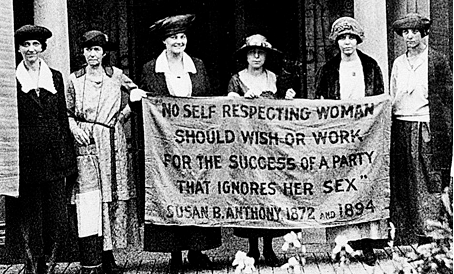By Katherine Slick, historic preservation consultant, ACHP Foundation President
It may be hard to imagine in an election year with a record number of women running for local, state, and national offices that 170 years ago women did not have the right to vote. In July 1848, Susan B. Anthony, Elizabeth Cady Stanton, and a small group of women launched a peaceful revolution that has changed the world–the Women’s Rights Movement. At a convention in Seneca Falls, New York, 68 women and 32 men signed a Declaration of Sentiments and Resolutions that included women’s suffrage. However, that same year in a narrowly defeated bill, the Washington Territorial legislators denied women the right to cast a ballot.
Advocates for women’s suffrage saw their first victory in the long campaign in 1869, when the Wyoming Territory passed legislation that accorded women voting rights on an equal basis with men, a practice that continued with admission to statehood. Ten additional states (including Washington) followed with voting rights acts through 1914. A vigorous campaign brought congressional passage of a proposed Amendment for women’s suffrage and the necessary state ratifications. In 1920, Tennessee was the last state to ratify the 19th Amendment to the Constitution assuring “The right of the citizens of the United States to vote shall not be denied or abridged by the United States or by any State on account of sex.”
Of course, the real places where women carried out the campaign and made history are in towns and cities across America. Sites in New York and Massachusetts associated with Anthony and Stanton’s work are well documented in the National Register of Historic Places. However, just as vital to the story of suffrage are the civic centers, women’s clubs, private residences and streets in every state where women organized and marched to secure a basic right in a democracy - the right to vote in elections.
In the lead up to the 2020 elections, it is exciting to think that communities across the nation could celebrate their contribution to the centennial of women’s suffrage by identifying, documenting, and registering those often unrecognized places. To assist in that effort, Congress passed and the President signed the 2018 budget that continues to provide $500,000 for a National Park Service grant program supporting the survey, inventory, and designation of historic properties that are associated with communities currently underrepresented in the National Register of Historic Places and among National Historic Landmarks. It is timely to tell the full story of women’s suffrage in America.
